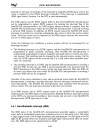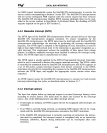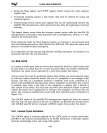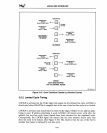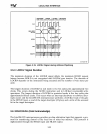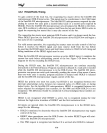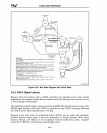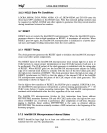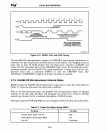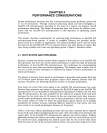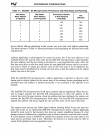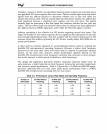
lOCAL
BUS
INTERFACE
CLK2
[
RES#
[~'----------5S
5
mml
THE
CLOCK
GENERATOR
ENSURES
THAT
ITS
RESET
OUTPUT
FALLING
EDGE
OCCURS
DURING
PHASE
lWO
RESET
[
____
--1/,.-------SS
5-5
------
.....
{'--
____
_
1386
N
ox
CPU
ASSUMES
RESET
FALLING
EDGE
OCCURS
DURING
PHASE
lWO,
AND
SETS
ITS
OWN
INTERNAL
PHASE
TO
MATCH
231732i3-21
Figure 3-21.
RESET,
ClK;
and
ClK2
Timing
The Intel386 DX microprocessor samples its
ERROR#
input during initialization to
determine the type of processor extension present in the system. This sampling occurs at
some time at least
20
CLK2 periods after the high-to-Iow transition of RESET and
before the first instruction fetch.
If
the
ERROR#
input
is
low,
the Intel386
DX
micro-
processor assumes that an Intel387 DX math coprocessor
is
being used, and the pro-
grammer must issue a command (FINIT) to reset the
ERROR#
input after
initialization.
If
ERROR#
is
high no processor extension
is
assumed.
3.7.3 Intel386
OX
Microprocessor External States
RESET causes the Inte1386 DX microprocessor output pins to enter the states shown in
Table
3-7.
Data bus pins enter the three-state condition.
Prior to its first instruction fetch, the Inte1386
DX
microprocessor makes no internal
requests to the bus, and, therefore,
will
relinquish bus control if it receives a HOLD
request (see Section 3.6 for a complete description of HOLD cycles).
Interrupt requests (INTR and NMI) are not recognized before the first instruction fetch.
Table 3-7. Output Pin States during
RESET
Pin Name Pin State
LOCK#, O/C#, AOS#, A31-A2 High
W/R#, M/IO#,
HLOA,
BE3#-BEO# Low
031-00
Three-State
3-36



